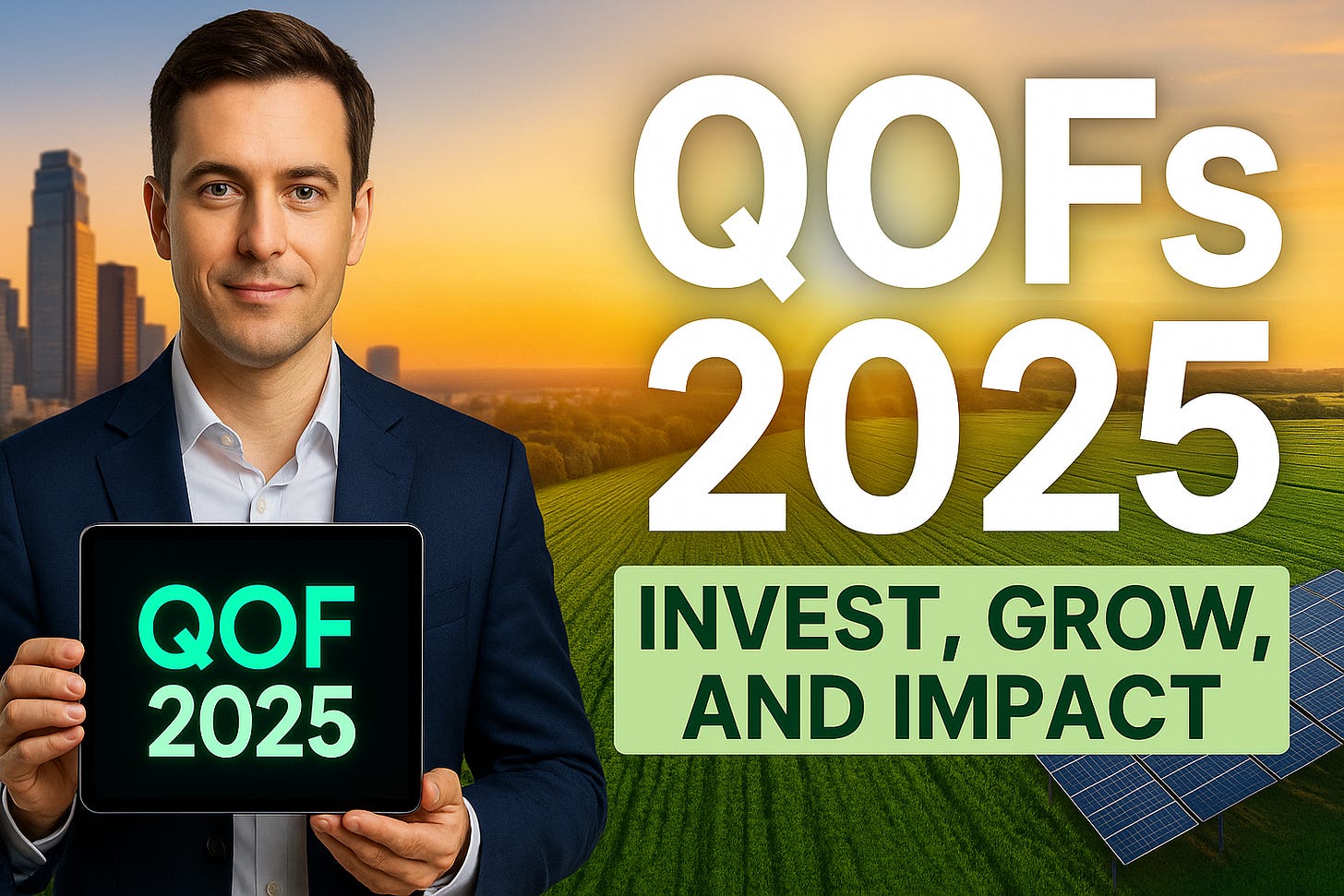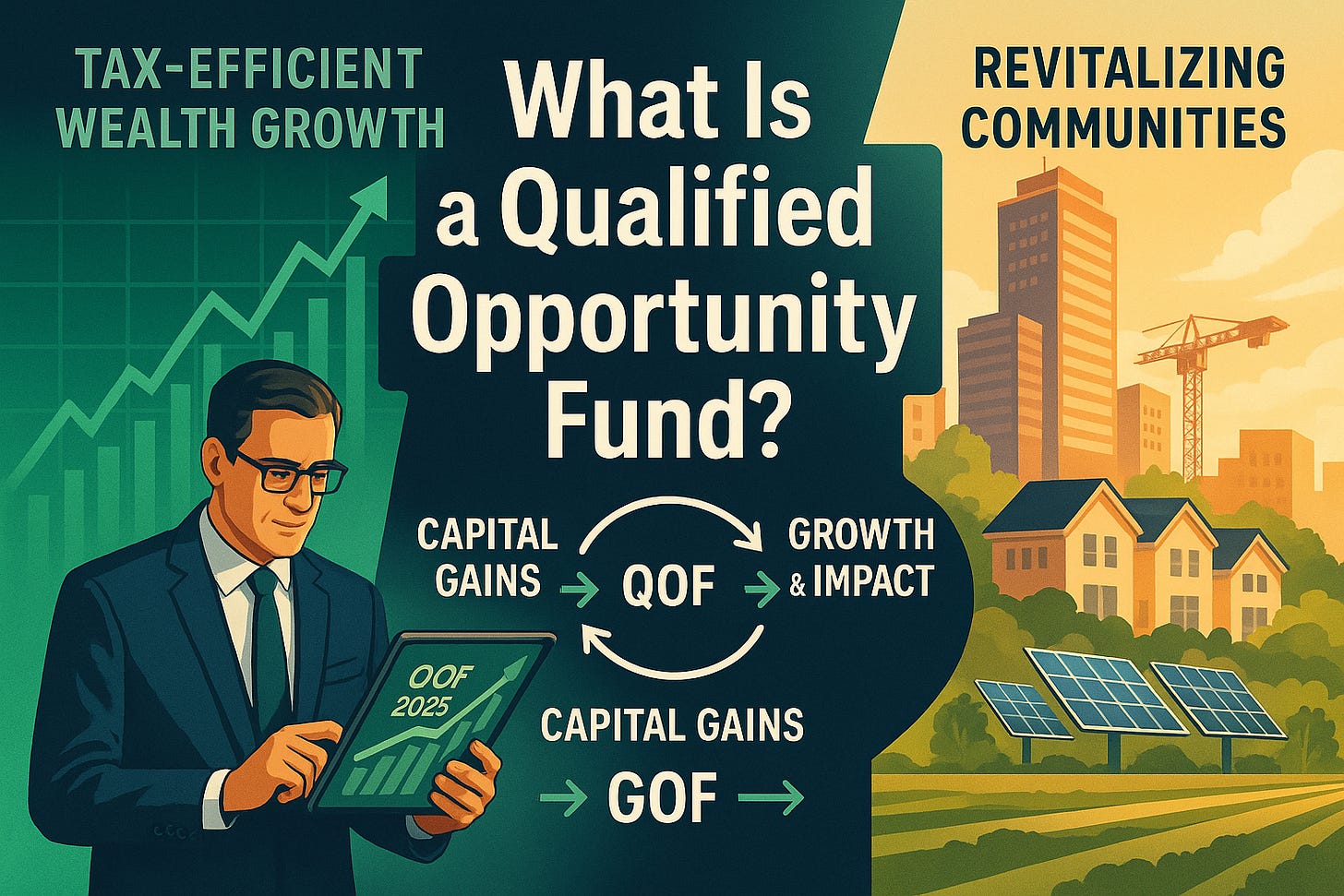What is a Qualified Opportunity Fund?
A Qualified Opportunity Funds (QOF) is an investment vehicle created under the Tax Cuts and Jobs Act of 2017 to channel private investment into economically distressed communities (Qualified Opportunity Zones, or QOZs). Investors can obtain substantial tax benefits by redirecting capital gains into QOFs, while also contributing to community revitalization.
How QOFs Originally Worked
Under the original framework:
You could defer capital gains tax by investing eligible gains in a QOF.
If held for 5 years, you got a 10% step-up in basis; for 7 years, 15%.
If held for 10 years or more, the appreciation of the QOF investment itself could be excluded from capital gains tax upon sale.
Deferred gains had to be recognized by December 31, 2026 under the old rules.
Investments had to meet various compliance rules (90% asset test, substantial improvement rules, etc.).
“A Qualified Opportunity Fund is one of the few tools that lets you defer today’s tax bill and potentially erase tomorrow’s—provided you pair disciplined underwriting with a true 10-year horizon. That alignment is what turns capital gains into catalytic capital.” — Robert Mowry
Trump’s Latest Update: One Big Beautiful Bill (2025)
On July 4, 2025, President Trump signed into law H.R. 1, the “One Big Beautiful Bill Act” (OBBBA), which brought sweeping changes (“Opportunity Zones 2.0”) to the QOZ / QOF framework.
Here are key changes:
Permanent status: The program will now be permanent, rather than sunsetting on December 31, 2026.
Rolling 5-year deferral for new investments after January 1, 2027 — instead of the fixed “deferral until end of 2026.”
Simplified basis step-up: After 5 years of holding, there is a 10% basis step-up for new investments. The prior additional 7-year/15% benefit is being removed.
New rural incentives: A new class of funds, Qualified Rural Opportunity Funds (QROFs), enjoys enhanced tax benefits when investing in rural zones. Highlights include a 30% basis step-up after 5 years, reduced property improvement thresholds, etc.
Tighter eligibility criteria for which census tracts can qualify as QOZs, including lowering the median income threshold from 80% to 70% of area or state median, elimination of “contiguous tract” rule, and other adjustments.
Regular redesignations: New QOZ designations will happen every 10 years, with governors nominating tracts and the Treasury certifying them. First new cycle kicks in around January 1, 2027, with proposals beginning July 1, 2026.
Gain elimination and basis freeze after 30 years: Investments held 30+ years will freeze the basis step-up at the fair market value as of the 30th anniversary; gains beyond that may be subject to tax.
What This Means for Investors
Timing matters: Investments made before January 1, 2027 benefit under the old rules. After that, the new rules apply. For many investors with capital gains now, there is an incentive to act under the current framework before it changes.
Rural projects are more attractive: With stronger benefits in rural Opportunity Zones (via QROFs), investment in less densely populated or underserved areas may yield more favorable tax outcomes.
Need for compliance and planning: Some new reporting requirements, stricter tract-eligibility, and tighter definitions mean that structuring, diligence, and legal/tax advisory work will be more important than ever.
Benefits Remain
Despite changes, many of the core attractive features are preserved, including:
Permanent exclusion of new investment’s appreciation after 10 years.
Deferral of eligible capital gains.
Strong incentives to revitalize low-income and rural communities.
“The smartest QOZ strategies treat tax benefits as the tail, not the dog: start with projects that cash-flow, add rigorous compliance, and—where it fits—lean into rural incentives. Do that, and you can compound after-tax returns while funding real community upgrades.” — Robert Mowry
Should You Reevaluate Your Strategy?
If you have capital gains, now is a good time to review:
Whether investing before December 31, 2026 under the old rules is advantageous.
What projects (especially in rural zones) might benefit under the new QROF incentives.
Whether your team (law, tax, accounting) is up to updating modeling, compliance, and reporting for the new regime.
Qualified Opportunity Funds under the updated law offer long-term certainty, new rural incentives, and refined rules that aim to focus benefits where they can have significant impact. The Trump-led changes under the One Big Beautiful Bill Act mark the most major overhaul of QOZ policy since its inception. For anyone with capital gains, these developments open up both challenges and opportunities — making expert advice essential.


